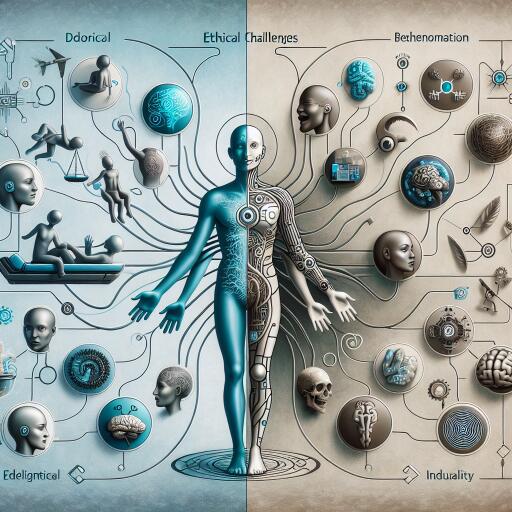What is Transhumanism and What Are Its Ethical Challenges?
The concept of transhumanism is increasingly mentioned in debates about the future of humanity and the profound ethical implications tied to emerging technologies aimed at fundamentally altering the human condition. But what does transhumanism really entail, and why is it a subject of both fascination and concern?
Argentine philosopher Mariano Asla, who holds a doctoral degree from the University of Navarra, recently shared his insights into this intricate topic with ACI Prensa, CNA’s Spanish-language news partner. Asla offered a nuanced critique of transhumanism, delving into its potential impacts on society and human identity.
Understanding Transhumanism
At its core, transhumanism is a scientific and cultural movement that advocates for the transformation of the human condition by developing and making widely available sophisticated technologies capable of enhancing human intellect and physiology. Asla defines it as the endeavor to “modify human biology through the convergence of new technologies,” such as nanotechnology, biotechnology, information technology, and cognitive science. This convergence aspires to merge the biological with the artificial, effectively creating a new species that transcends the current limitations of humanity.
The ultimate goals of transhumanism, according to Asla, are to render humans “healthier, more intelligent, more empathetic, and long-lived.” This vision of transcending human biological limits is not a recent development. The term itself was first introduced by Julian Huxley in 1957, envisioning humanity’s evolution beyond its current form.
The Ethical Challenges of Transhumanism
While the promises of transhumanism may appear alluring, they come with a host of ethical questions and dilemmas. One of the primary concerns revolves around the very definition of being human. As human beings merge with technology, the line that separates the natural from the artificial becomes increasingly blurred. This raises questions about identity, equality, and what it fundamentally means to be human.
Furthermore, the accessibility of transhumanist technologies poses another significant ethical challenge. There’s a real risk that only those with sufficient financial resources will be able to afford these enhancements, potentially leading to a new class of “enhanced” individuals. This scenario could exacerbate existing social inequalities and stratifications, with profound implications for society and the concept of human rights.
Additionally, the pursuit of enhanced intelligence and longevity brings into question the value we place on human life in its current form. Would an “enhanced” life necessarily mean a more meaningful or fulfilled one? How would these enhancements impact human relationships, empathy, and our connection to the natural world?
Conclusion
The road to transhumanism is fraught with ethical and existential questions that society must address with caution and profound reflection. As technology advances at an unprecedented pace, the dialogue between technological possibility and ethical responsibility becomes increasingly crucial. The dream of transcending human limitations through technology tempts with its promise of a better future, but it also prompts us to ask at what cost – and to whom. As we stand on the brink of potentially radical changes to the human experience, the conversation around transhumanism remains more relevant than ever, challenging us to consider what it truly means to be human in the age of technology.










